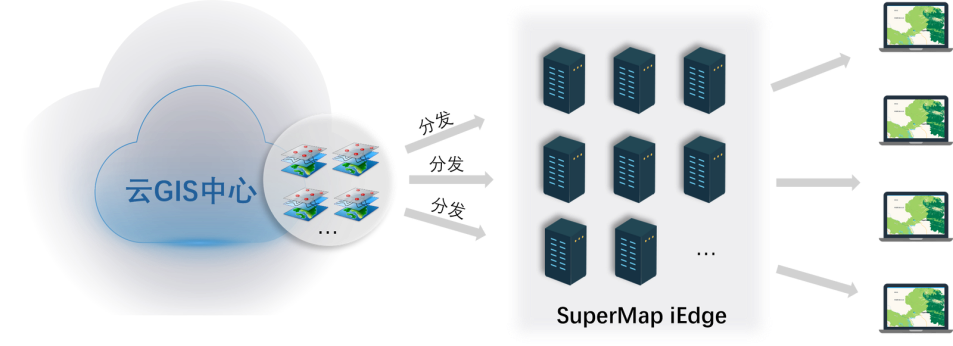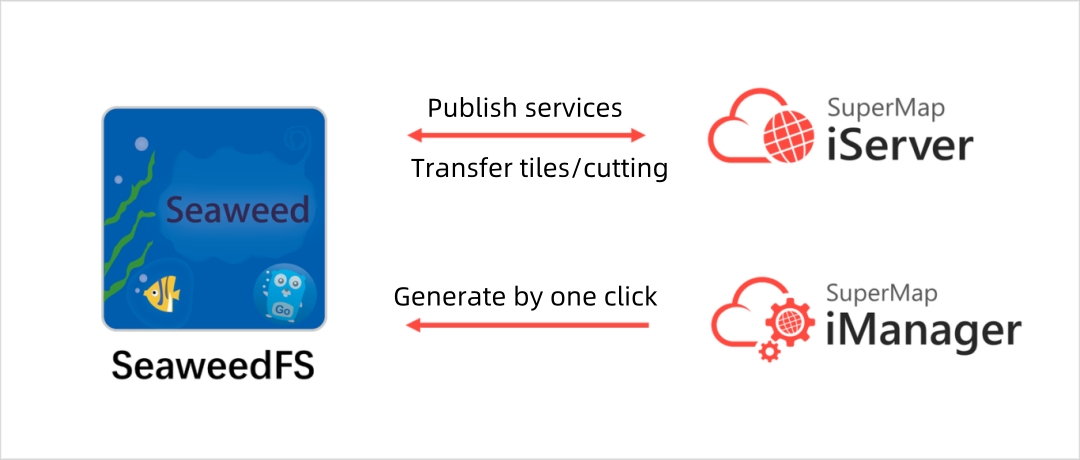Years ago, SuperMap integrated five key technologies of cloud-native GIS (microservices, containerization, automatic orchestration, service grid, and serverless computing) and launched a cloud-native GIS product suite, dedicated to building a GIS application system with advantages such as dynamic scaling, fault isolation, automatic recovery, intensive resource use, and intelligent operation and maintenance.
In SuperMap GIS 2024, the cloud-native GIS product suite (hereinafter referred to as the "GIS cloud suite") further integrates the technical advantages of serverless computing, improves the technical applications of GeoFaaS and GeoBaaS, and functionalizes more classic functions of SuperMap iServer, bringing a lighter and more intensive user experience. Furthermore, it has added a built-in common database, which brings more efficient operation and maintenance capabilities through rapid creation and multi-faceted monitoring capabilities.
01 GIS Function as a Service (GeoFaaS): cache distribution function added, more intensive resource utilization
SuperMap iServer can pre-generate map tiles (cache) and distribute them to SuperMap iEdge which is closer to the client through the cache distribution function. The system can directly read map tiles and respond to client requests without having to forward requests to SuperMap iServer, which reduces server load and improves the efficiency of client access to maps.

Cache distribution function
The computing resources required for cache distribution tasks are usually related to factors such as the number and size of the distributed map tiles. When a large number or large size of map tiles needs to be distributed quickly, more computing resources are needed, otherwise the resources need to be reduced.
Therefore, in the SuperMap GIS 2024 version, the GIS Cloud Suite has added a "cache distribution" function, which runs the cache distribution task in the form of Serverless GIS functions, adapting to the ever-changing cache distribution needs in a more flexible and agile way.
The cache distribution function of the GIS Cloud Suite provides the same functions as the classic version, and can automatically scale elastically and recover quickly, making the GIS system more elastic and resilient. In addition, computing resources are enabled and allocated on demand, without the need for manual operation and maintenance and attention to underlying resources.

Cache distribution task topology diagram
02 GIS Backend as a Service (GeoBaaS): Enhanced storage management and reduced costs in database operation and maintenance
The ability added to create multiple database environments
SuperMap iManager, as a GIS operation and maintenance management software platform, can create multiple databases with one click and provide all-round monitoring and management capabilities to help system administrators operate and maintain the storage environment conveniently. SuperMap iManager 2024 adds support for creating SeaweedFS object storage databases, which is a simple and highly scalable distributed file system suitable for efficient processing of small files; SuperMap iServer 2024 adds the ability to publish compact UGCV5 vector/raster tiles in object storage environments (including SeaweedFS S3) as map services or vector tiles, in conjunction with SuperMap iManager 2024, it can realize the creation, monitoring, management and use of SeaweedFS database in one stop, reducing costs of operation, maintenance and management.

One-stop service for creating, monitoring, managing and using of SeaweedFS database
At the same time, SuperMap iManager 2024 adds support for creating Neo4j databases, a high-performance graph storage database that can be used to store knowledge graph data and work with the knowledge graph service of SuperMap iServer 2024 to form a business closed loop.
In summary, SuperMap GIS 2024 has improved the resource utilization of the system and reduced the system operation and maintenance costs by further deepening the application of serverless computing technology. In the future, SuperMap will continue to deepen the research and development of cloud-native GIS, and promote the upgrading and application of various key technologies, so as to bring users a better development and operation and maintenance experience.